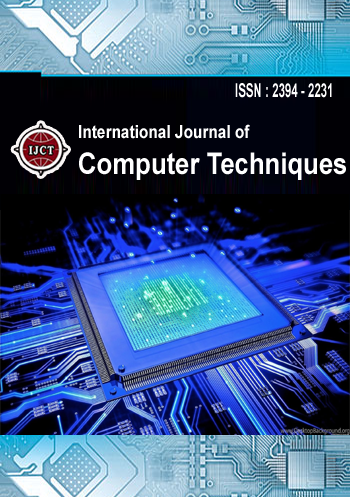
 Submit Your Article :
editorijctjournal@gmail.com
Submit Your Article :
editorijctjournal@gmail.com

Paper Title : An Efficient Model for Detecting Uniform Resource Locator (URL) Phishing using Machine Learning Techniques
ISSN : 2394-2231
Year of Publication : 2021
 10.29126/23942231/IJCT-v8i3p10
10.29126/23942231/IJCT-v8i3p10


MLA Style: Nkue Dumka,Dr. Daniel Matthias,Dr. E.O Bennett " An Efficient Model for Detecting Uniform Resource Locator (URL) Phishing using Machine Learning Techniques " Volume 8 - Issue 3 May-June , 2021 International Journal of Computer Techniques (IJCT) ,ISSN:2394-2231 , www.ijctjournal.org
APA Style: Nkue Dumka,Dr. Daniel Matthias,Dr. E.O Bennett " An Efficient Model for Detecting Uniform Resource Locator (URL) Phishing using Machine Learning Techniques " Volume 8 - Issue 3 May-June , 2021 International Journal of Computer Techniques (IJCT) ,ISSN:2394-2231 , www.ijctjournal.org
Abstract
One of the major challenges that researchers face in the field of e-fraud detection is a rapid shift in fraud trends. There are three key forms of e-fraud, namely: spam email, phishing and infiltration of the network. As many organizations and individuals worldwide have become victims, phishing remains a major threat to global security and the economy. As technology progresses, it is a lucrative trade that will keep blooming. The rapid pace of development of new websites for phishing and distributed phishing attacks has made it difficult to keep blacklists up to date. This paper concentrated on developing an efficient model for detecting phishing URL using machine learning technique. Link Guard algorithm was used to extract real and visual links from the Domain Name System (DNS) and compared the actual link and the visual link to check if the links are the same. Support Vector Machine has been used to train and classify URL into genuine and phishing URL. The system was implemented in Python programming language. Experiments were conducted using two publicly accessible website databases to test the efficiency of the identification of phishing websites. 3200 websites samples were used, 2127 genuine websites and 1036 websites were phishing. The LinkGuard and SVM yielded an accuracy of 98.8%.
Reference
[1]. Nivedha, S.,Gokulan,K. C.,Gopinath,R. and Gowshik,R.(2017). Improving phishing URL Detection using Fuzzy Association mining,2(3), 12319-1805. [2]. APWG “Phishing activity trends report 3rd quarter.”US. Vol 1Issue 11, 2018. [3]. Pratiwi, M.E., Lorosae, T. A. and Wibowo, F. W. (2018). “Phishing Site Detection Analysis Using Artificial Neural Network IC-ELINVO IOP Conference Series: Journal of Physics: Conference Series 1140 (2018) 012048 IOP Publishing doi:10.1088/1742- 6596/1140/1/012048. [4]. Desai, J. A., Jatakia, N. and Raul, A. (2018). Malicious web content detection using machine leaning. 2nd IEEE Int. Conf. Recent Trends Electron. Inf. Commun. Technol., 2(3), 1432–1436. [5]. Machado, L. and Gadge J. ( 2017). Phishing Sites Detection Based on C4.5 Decision Tree Algorithm,” International Conference on Computing, Communication, Control and Automation, 1, 1–5. [6]. Parekh S., Parikh, S. D. Kotak, and Sankhe, P. S. (2018). A New Method for Detection of Phishing Websites: URL Detection,” in 2018 Second International Conference on Inventive Communication and Computational Technologies (ICICCT), 949–952. [7]. Sönmez, Y. T., Tuncer, H. Gökal, and Avci, E. (2018). Phishing web sites features classification based on extreme learning machine,” 6th Int.Symp. Digit. Forensic Security,1, 1–5. [8]. Shrivas , A. K. andSuryawanshi, R. (2017). Decision tree classifier forclassification of phishing website with info gain feature selection. Int. J. Res. Appl. Sci. Eng. Technol., 5(5), 780–783. [9]. Sudhanshu, G., Kritika, R. and Bansidhar. J. (2018). Detecting Phishing Websites Using Rule-Based Classification Algorithm
Keywords
—Efficient Model, Phishing URL, Machine Learning Techniques
